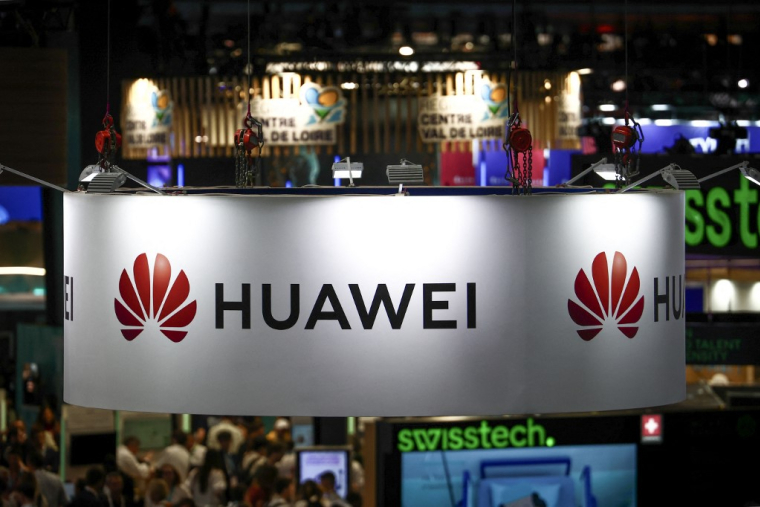Huawei has signaled a bold push in AI hardware, unveiling plans to launch cutting-edge architectures that Huawei executives say will redefine computing power for artificial intelligence. The company, a major player in Shenzhen, frames these developments as part of a broader geopolitical race for technological supremacy between Beijing and Washington. The announcement comes as Huawei and Nvidia—leaders in the global AI and accelerator markets—face separate, country-specific restrictions that are reshaping how both firms operate internationally. Huawei’s vice president, Eric Xu, described the forthcoming architectures as among the most powerful globally for many years to come, a claim underscored by the specifics he offered about the devices and their intended applications. The statement, delivered in a speech and shared with the press, places Huawei squarely at the center of strategic discussions about AI infrastructure, supply chains, and technological sovereignty.
Huawei’s planned AI architectures and what they aim to achieve
Huawei revealed plans to roll out two high-end AI architectures, named Atlas 950 and Atlas 960, designed to satisfy what Xu described as the “ever-growing demand for computational power.” The label “supernode” was used to describe a crucial building block of these systems. A supernode is, in Xu’s explanation, a configuration that groups several machines into a single logical unit. This arrangement allows the system to function as one cohesive entity for machine learning, high-level reasoning, and complex cognitive tasks, effectively enabling large-scale training and inference without the user needing to manage a multitude of independent devices.
Xu further stated that these architectures are scalable enough to operate as clusters, a common arrangement for AI workloads where multiple compute nodes collaborate to handle training, data processing, and real-time inference at scale. The relevance of such a design becomes clear when considering the demands of advanced AI models, which require immense amounts of processing power, memory, and fast inter-node communication. In the Huawei framework, a supernode represents a consolidated performance profile that can deliver capacity, speed, and efficiency beyond what a single device can provide, while still offering the manageability of a unified system.
When Xu described the Atlas architectures, he highlighted several performance indicators that would set them apart. He noted that the supernodes would lead in key metrics such as the capacity of the accelerators (often referred to as “cards” in the industry), total computational capability, memory capacity, and interconnect bandwidth. In other words, Huawei is positioning Atlas 950 and Atlas 960 as systems designed to push the envelope of compute density, memory bandwidth, and data throughput—critical factors for training large language models, perception systems, and other AI applications that rely on massive parallelism and rapid data exchange.
The clockwork behind these announcements is intricate. The Atlas line is not just about raw silicon power; it is about how multiple pieces of hardware can be integrated to behave as a single, highly capable engine for AI tasks. The emphasis on “supernodes” operating within clusters points to a modular approach—one that potentially allows Huawei to scale up or down depending on demand, budgetary constraints, or strategic considerations. For enterprise customers and research institutions, this modularity could translate into more flexible procurement options and a clearer path to upgrading performance over time, as newer supernodes or successor architectures become available while preserving compatibility with existing deployments.
From a strategic perspective, the Atlas 950 is positioned for a launch window at the end of 2026, with the Atlas 960 expected to follow in 2027. This timeline, if realized, would place Huawei on a parallel track with other major AI hardware initiatives, as the industry rapidly evolves to meet the requirements of ever-larger models and more sophisticated inference tasks. The emphasis on a future-ready roadmap suggests that Huawei intends to establish itself not only as a manufacturer of AI accelerators but as a key architect of end-to-end AI infrastructure capable of supporting expansive, multi-stage workflows—ranging from data ingestion and preprocessing to complex training regimens and real-time decision-making.
In sum, Huawei’s unveiling underscores a clear strategic objective: deliver high-performance, scalable AI architectures that can sustain the core workloads of modern AI ecosystems, while leveraging the supernode concept to simplify management and maximize efficiency at scale. The company’s messaging implies a belief that enabling deep learning systems to operate as integrated, robust clusters will be a defining feature of next-generation AI infrastructure, both for China and the broader global market.
Understanding the concept of “supernodes” and their role in AI workloads
To fully grasp Huawei’s approach, it helps to unpack what a supernode entails and why it matters for AI workloads. A supernode, as described by Huawei’s leadership, is a multi-machine construct that functions as a single unit for the purposes of learning, reflection, or reasoning. In practice, this means several physical machines—each equipped with specialized accelerators, memory, and high-speed interconnects—are orchestrated so that the aggregate behaves like one powerful, cohesive system. This model has several implications for how AI tasks are executed.
First, a supernode can dramatically increase compute density without requiring users to manage dozens or hundreds of discrete devices. For training large models, the ability to coordinate a large pool of compute resources efficiently is essential. The architecture aims to optimize data flow, minimize synchronization overhead, and maximize the utilization of every accelerator within the group. In this sense, a supernode becomes a microcosm of a larger AI data center, designed to deliver scalable performance for both training and inference.
Second, the logical unity of a supernode simplifies software management and orchestration. Instead of treating a cluster as a collection of independent nodes, users can submit workloads to a single, coherent entity. This can reduce the complexity of model deployment, troubleshooting, and performance tuning, particularly for teams working with multi-node training regimes that require careful coordination of gradient updates, data sharding, and resource allocation.
Third, the interconnection backbone within a supernode—encompassing bandwidth, latency, and reliability of the internal network—plays a pivotal role in determining overall performance. In large AI systems, the speed at which data can move between accelerators and memory is often a limiting factor. By designing supernodes with high interconnect bandwidth and optimized memory hierarchies, Huawei aims to minimize bottlenecks that can slow down training or degrade the efficiency of inference at scale.
Fourth, the concept aligns with a broader industry trend toward modular, scalable AI infrastructure. As organizations seek to blend on-premises compute with hybrid or cloud-based resources, architectures that can scale smoothly and maintain consistent performance across increasing levels of complexity become increasingly valuable. A supernode-centric approach can support such scalability by enabling incremental expansion while preserving a unified user experience and predictable performance characteristics.
Fifth, the emphasis on memory capacity and memory bandwidth, alongside accelerator power, highlights a fundamental truth about modern AI workloads: memory is often as critical as compute. Large models require not just many processing elements but also the ability to feed them with data quickly and reliably. By prioritizing memory resources and interconnect performance within the supernode framework, Huawei signals a comprehensive strategy to address the “memory bottleneck” challenge that can cap the speed and efficiency of AI workloads.
Overall, supernodes are presented as a practical and forward-looking solution for achieving high performance in AI tasks, particularly those involving large-scale model training and real-time inference. They promise a more manageable path to scale, a more streamlined software experience, and a robust foundation for the demanding compute and memory requirements of future AI systems. Huawei’s emphasis on this concept suggests a deliberate attempt to redefine how enterprises design, deploy, and operate AI workloads at scale, with the Atlas 950 and Atlas 960 serving as flagship embodiments of this architectural philosophy.
Timeline, deployment strategy, and strategic significance for Huawei
Huawei has laid out a clear timeline for the Atlas lineup, with the Atlas 950 slated for release by the end of 2026 and the more advanced Atlas 960 expected in 2027. If executed as described, the timeline would position Huawei to introduce a next-generation AI engine into the market at a moment when demand for powerful AI infrastructure is accelerating globally. This timeline is not just about product cadence; it signals Huawei’s intent to compete more aggressively with established players in the hardware space, particularly Nvidia, which has long dominated the market for AI accelerators and the software ecosystems that surround them.
The strategic significance of Atlas 950 and Atlas 960 extends beyond hardware capabilities. By presenting a route to high-performance AI compute that can be deployed as standalone systems or integrated into larger clusters, Huawei aims to create a compelling value proposition for customers seeking capabilities that rival or complement those provided by Western vendors. The emphasis on “supernodes” that function as single units for training and reasoning indicates a design philosophy oriented toward ease of use, reliability, and performance, which are critical factors for enterprise adoption as organizations scale up their AI efforts.
Furthermore, this development occurs against a backdrop of ongoing regulatory and geopolitical dynamics that influence the way Huawei and other Chinese tech firms source components, design products, and access foreign markets. The announcement follows discussions and reports about government actions intended to shape the competitive landscape. The timing suggests that Huawei intends not only to advance its technology but also to position itself strategically within broader national and international policy debates about AI, security, and technological sovereignty.
Huawei’s approach reflects a long-term vision: to build an autonomous, world-class AI computing stack that can operate with a strong degree of independence from external suppliers where possible, while maintaining compatibility with global AI software ecosystems. The Atlas architecture could enable Huawei to offer end-to-end AI infrastructure—from raw compute to model training and deployment—within a single, tightly integrated platform. If successful, Atlas could become a central pillar in Huawei’s AI strategy, helping the company attract enterprise customers that require scalable, predictable performance and robust engineering support.
As part of the broader industry context, Huawei’s announcements intersect with the realities of a highly dynamic market for AI hardware, where demand for high-bandwidth memory, powerful accelerators, and sophisticated interconnects continues to surge. The Atlas initiative, with its defined release windows, signals a deliberate effort by Huawei to secure a foothold in this evolving landscape, potentially reshaping competitive dynamics and prompting other players to rethink their own product roadmaps.
Geopolitical context: regulatory moves, reactions, and industry implications
The timing of Huawei’s Atlas revelation coincided with heightened scrutiny around technology exports and strategic chip supply, as reported in major industry outlets. A Financial Times article, cited by observers, described a move by China’s cyberspace administration to pressure domestic tech giants to halt orders for Nvidia’s RTX Pro 6000D chips. This development underscores a broader push by Beijing to steer its AI ecosystem toward domestic suppliers and reduce dependence on foreign hardware. The reaction from Nvidia’s leadership was mixed; Jensen Huang, Nvidia’s chief, expressed disappointment in what he described as a troubling trend in the industry’s regulatory environment.
On the diplomatic front, Lin Jian, spokesman for China’s Ministry of Foreign Affairs, avoided confirming the new restrictions during a daily briefing but underscored China’s objection to discriminatory practices in economic, commercial, and technological spheres. His remarks reflected a broader sentiment in Beijing that trade and technology policy should be designed to protect national interests while engaging in global markets. The discourse surrounding these issues illustrates how policy decisions can have a direct impact on corporate strategy, supply chains, and cross-border collaboration in AI research and development.
Analysts and observers have offered varied interpretations of these regulatory moves. Some see them as a further escalation in the ongoing strategic contest between the United States and China. In this view, restrictions on foreign hardware could serve to accelerate domestic innovation and the development of Chinese-designed chips and AI accelerators, potentially shortening the gap in certain AI capabilities. Others view the measures as a pragmatic response to concerns about critical technology controls, with the aim of safeguarding national security and economic stability in the face of rapid technological advancement.
Within China’s AI ecosystem, the regulatory environment appears to be shaping the competitive landscape in tangible ways. The Financial Times reported that Chinese regulators recently summoned Huawei and Cambricon, another prominent domestic chipmaker, for discussions on how local designs compare with Nvidia’s chips. This move signals government interest in ensuring that domestic players can compete effectively while balancing the need for access to advanced technologies. It also highlights the government’s willingness to engage directly with leading domestic manufacturers to align policy objectives with industry capabilities.
From Huawei’s perspective, the regulatory climate reinforces the strategic importance of building a robust, domestically grounded AI hardware stack. By advancing Atlas and accelerating the development of in-house architectures, Huawei can better navigate external pressures while expanding its range of offerings for the Chinese market and potentially for global customers seeking alternatives to widely used Western hardware ecosystems. The broader industry implication is a push toward greater self-reliance and diversification of supply chains, alongside ongoing collaboration with international partners in areas that are not restricted by policy.
Observers have stressed that these developments are not merely about one company’s product roadmap; they signal a potentially enduring shift in how AI infrastructure is designed, manufactured, and marketed in China and beyond. As domestic chipmakers such as Cambricon and other players expand their capabilities, the balance of power in AI hardware innovation could become more distributed, with multiple regional centers contributing to a more resilient global ecosystem. In the near term, Huawei’s Atlas initiative will be closely watched as a bellwether for what is possible when national technology strategies converge with private-sector innovation in AI.
Industry implications: ecosystem shifts, competition, and strategic responses
Huawei’s pivot toward high-performance AI architectures like Atlas is likely to reshape several facets of the global AI hardware ecosystem. First, the anticipated Atlas 950 and Atlas 960 introduce a compelling alternative for organizations seeking to own and operate powerful AI compute infrastructure on-premises or in private clouds. The supernode concept—where multiple machines function as a single, cohesive unit—could influence purchasing decisions, software stack design, and deployment strategies. Enterprises may weigh the benefits of such integrated systems against the established model of mixing accelerators from multiple vendors within a larger data center.
Second, the move intensifies competition with Nvidia, a dominant force in AI accelerators and the broader AI software ecosystem. Nvidia’s GPUs and software platforms, including libraries and toolchains that support a wide array of AI workloads, have set a high bar for performance, reliability, and developer support. Huawei’s Atlas family seeks to offer a competitive alternative, potentially with benefits in China and other markets that prioritize domestic suppliers or strategic partnerships with Chinese firms. This competition can spur broader innovation, with each company refining its hardware and software offerings to capture market share across different regions and customer segments.
Third, regulatory developments and industry responses suggest a growing emphasis on domestic capability and resilience. The conversations around Huawei, Cambricon, and Nvidia’s chips reflect a broader policy-driven push to diversify supply chains and reduce exposure to external shocks. In practice, this could accelerate investments in domestic chip design, manufacturing, and software ecosystems, as well as efforts to create more robust AI infrastructure ecosystems that can compete internationally while aligning with national strategic goals.
Fourth, the potential alignment between Atlas architectures and China’s domestic AI software and silicon ecosystem could lead to closer collaboration with local developers, researchers, and enterprises. Huawei’s hardware roadmap, aligned with China’s broader AI ambitions, may stimulate the growth of local accelerators and associated software stacks, including optimization libraries, compilers, and model-training frameworks tailored to Atlas architectures. If successful, that collaboration could yield a richer, more integrated AI ecosystem in which hardware and software are co-optimized for national priorities and market needs.
Fifth, for Nvidia and other international players, these developments underscore the importance of maintaining global collaboration while navigating policy constraints. They may seek to diversify their own supply chains, expand into new regions, or invest in partnerships that ensure continued access to customers. The evolving regulatory environment could also influence how AI hardware is marketed, standardized, and certified across different jurisdictions, encouraging vendors to adapt to a more complex global landscape.
In sum, Huawei’s Atlas rollout sits at the confluence of technological ambition and geopolitical dynamics. The implications for the industry include potential shifts in competitive advantage, new pathways for domestic innovation, and an intensifying focus on scalable, high-performance AI infrastructure that can meet the demands of modern AI applications. As Atlas approaches its launch windows, market watchers will be paying close attention to how Huawei delivers on its promises, how China’s regulatory landscape evolves, and how the broader ecosystem responds to a renewed emphasis on domestic capability and strategic autonomy.
Long-term outlook: AI infrastructure, sovereignty, and market trajectories
Looking ahead, the AI infrastructure landscape is poised to be shaped by a combination of technical advances, policy decisions, and corporate strategies that prioritize performance, scalability, and resilience. Huawei’s Atlas initiative exemplifies a broader move toward architectures that can unify multiple computing units into a single, coherent platform capable of meeting the demands of next-generation AI workloads. Such architectures may become increasingly attractive to enterprises seeking to deploy AI at scale in environments where control over hardware and software stacks is a strategic priority.
A key driver of this trajectory is the ongoing expansion of AI models in scope and complexity. As models grow in size and sophistication, the need for robust memory, high interconnect bandwidth, and efficient orchestration becomes more acute. Supernodes, as a concept, address these requirements by enabling large-scale parallelism without the administrative overhead of managing countless individual nodes. They also offer the potential for more predictable performance and easier scaling, which are highly valued attributes in enterprise deployments and research settings alike.
China’s regulatory and industrial strategy factors will continue to influence how Atlas and similar architectures are adopted. Government-supported programs aiming to bolster domestic chip design and manufacturing could accelerate the development of complementary technologies—ranging from specialized accelerators to software toolchains—that align with Atlas hardware. This alignment could create a more cohesive domestic AI infrastructure ecosystem, reducing dependency on external suppliers and enabling faster iteration cycles for national AI programs.
Another important dimension is the global competition for AI talent. The success of large-scale AI hardware projects depends not only on the raw technical capabilities of the architectures themselves but also on the surrounding ecosystem of developers, researchers, and engineers who can optimize software, train state-of-the-art models, and deploy them effectively. Huawei’s Atlas strategy will likely rely on a robust community of researchers and practitioners who are proficient in constructing, tuning, and utilizing these systems across diverse workloads. As the ecosystem evolves, talent mobility and cross-border collaboration will influence how quickly Atlas-based solutions can mature and gain traction in international markets.
From a market perspective, the trajectory of Atlas will depend on several factors, including the price-performance balance, energy efficiency, and reliability of the systems, as well as the strength of the software stacks that support model development, training, and deployment. The degree to which Huawei can deliver a compelling total cost of ownership, procure necessary components, and sustain long-term software support will shape customer adoption. Additionally, the response from competing vendors, including Nvidia and other global players, will contribute to an ever-shifting competitive landscape where differentiation through performance, integration, and ecosystem support remains paramount.
The geopolitical context will continue to cast a shadow over the AI hardware market as well. Trade policy, export controls, and national security concerns will influence how and where AI accelerators are produced, sold, and deployed. In such an environment, the appeal of domestically oriented, self-reliant technology stacks grows for some stakeholders, even as global collaboration remains essential for many areas of AI research and development. The balance between openness and sovereignty will be a defining theme for the industry in the coming years, with Atlas and related architectures serving as high-profile case studies of how nations and corporations navigate these tensions.
Ultimately, the path forward for Huawei’s Atlas line hinges on several interdependent factors: the realization of the projected launch windows (Atlas 950 by late 2026 and Atlas 960 by 2027), the integration of supernode concepts into scalable, user-friendly platforms, the ability to secure critical components amidst regulatory constraints, and the strength of the accompanying software ecosystems that make such hardware truly valuable for real-world AI workloads. If Huawei can marry these elements effectively, Atlas could emerge as a cornerstone of China’s AI infrastructure strategy, offering a powerful alternative to established hardware ecosystems and shaping how organizations approach AI development, deployment, and governance in the years to come.
Conclusion
Huawei’s announcement of Atlas 950 and Atlas 960, framed around the creation of “supernodes” that function as unified, highly capable engines for AI training and reasoning, marks a pivotal moment in the ongoing global competition over AI infrastructure. The company emphasizes the potential for these architectures to deliver leading performance in critical metrics such as accelerator capacity, total compute power, memory availability, and high-bandwidth interconnects. With Atlas 950 expected at the end of 2026 and Atlas 960 slated for 2027, Huawei signals a deliberate, long-term investment in end-to-end AI infrastructure that could reshape procurement decisions for enterprises seeking scalable, integrated AI systems.
This development unfolds amid a complex geopolitical backdrop. Regulatory actions within China aimed at steering technology procurement toward domestic suppliers, together with public statements from Chinese authorities and responses from multinational players, highlight the broader push for technological sovereignty and resilience. The reported discussions between Chinese regulators and Huawei, Cambricon, and other domestic chipmakers regarding Nvidia’s chips underscore the government’s active role in shaping the competitive landscape and the strategic priorities of national AI champions.
For Huawei, Atlas represents more than a new line of hardware; it embodies a strategic approach to AI infrastructure that centers on modular, scalable supernodes capable of delivering high performance within a unified architecture. The emphasis on memory capacity, bandwidth, and integrated system design reflects a comprehensive effort to address the practical demands of modern AI workloads—training large models, supporting complex inference pipelines, and enabling efficient data processing across distributed compute resources. As the Atlas roadmap moves forward, observers will be watching not only for the technical milestones but also for how Huawei navigates regulatory developments, market dynamics, and the evolving ecosystem of domestic and international AI hardware providers.
In the broader context, the Atlas initiative contributes to the ongoing evolution of the AI hardware market, where ambitious architectures, competitive dynamics, and policy considerations intersect to shape the tools available to researchers, developers, and businesses. The coming years are likely to see continued innovation in AI accelerators, memory architectures, and software ecosystems, with Huawei’s Atlas family positioned as a significant and influential player within this rapidly changing landscape.



